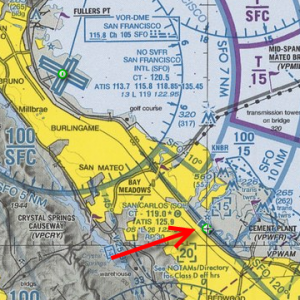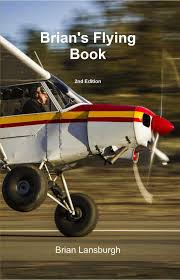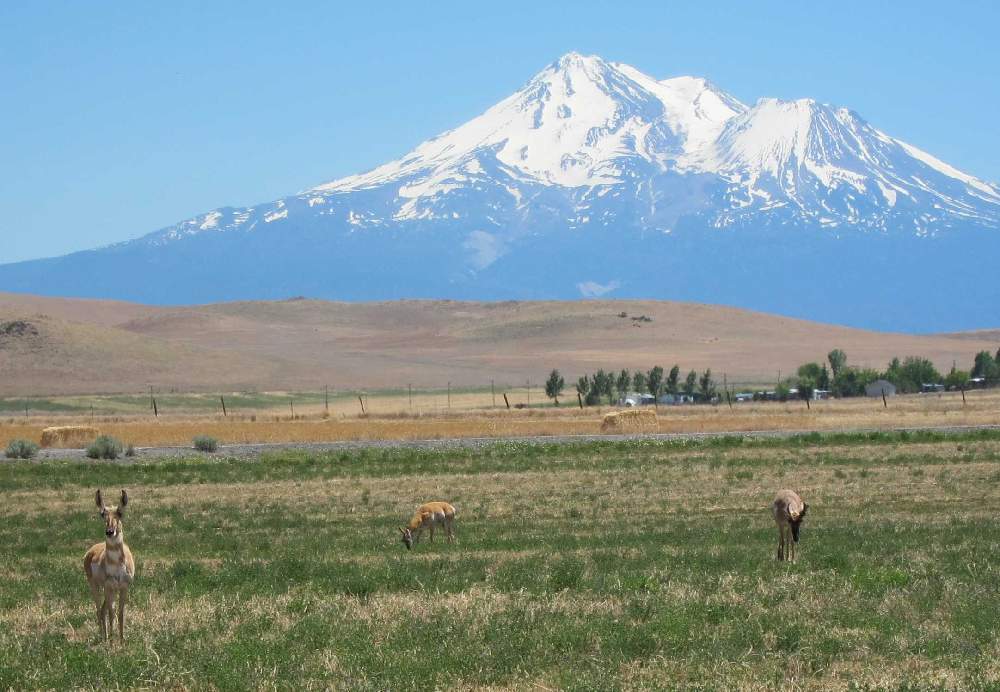There are tons of flying books out there, some good, some not so good. I had the pleasure of reading “Brian’s Flying Book” by Brian Lansburgh recently, and I found myself nodding my head at a series of unconventional, even downright heretical, notions about flying and flight instructing. Does that make me a heretic too?
This fast read from a former air-show clown, full of delightful anecdotes and funny stories, goes right to the heart of how to become a safer pilot—mastering stick and rudder skills well beyond what you’re taught to earn your pilot certificate. Sound familiar? I got so excited after reading Brian’s book, I immediately signed up for some lessons with him.
A Tale of Two Cities (or maybe A City and A Hamlet)
 I did all my original training at San Carlos Airport (KSQL) in the San Francisco Bay Area. The local airspace was tucked under the SFO arrival corridor. My first instructor was a young kid who went to fly the airlines. My second instructor was a young kid who went to fly the airlines. It wasn’t until my third instructor that I figured out I really needed to find someone who had committed his career to instructing, not just building time.
I did all my original training at San Carlos Airport (KSQL) in the San Francisco Bay Area. The local airspace was tucked under the SFO arrival corridor. My first instructor was a young kid who went to fly the airlines. My second instructor was a young kid who went to fly the airlines. It wasn’t until my third instructor that I figured out I really needed to find someone who had committed his career to instructing, not just building time.
As a software engineer, I delved deeply into the workings of avionics and the National Airspace. ATC procedures and instrument flying became my bread and butter. And so, MasterFlight eventually evolved out of those interests, focusing on advanced instrument flying, glass cockpits and technically advanced aircraft.
Brian learned to fly from some salty old pilots. He cut his teeth as an instructor at a variety of tiny, non-towered, mountain airports like Montague Airport (1O5) in the shadow of Mt. Shasta, CA. Flying low-powered tailwheel aircraft in the mountains and towing gliders taught him true stick-and-rudder mastery. He spent years on the air-show making people laugh with his aerobatic antics.
Kindred Spirit
I first met Brian at Sunriver Airport (S21), where he served as airport manager before opening his own glider tour business flying “The Big Yellow Bird.” We hit it off immediately. Perhaps it was our shared simultaneous enthusiasm and disdain for the Geezer Patrol (those weathered pilots sitting around the airport sharing hanger stories), perhaps we recognized in each other a true love of flying, I don’t know.
It’s only after reading his book, that I discovered one thing I have in common with Brian, this belief:
I believe that if more pilots could handle their aircraft with the skills I’ve always tried to teach, we’d have fewer wrecks. I also feel that modern pilots reach a certain level of proficiency and then stop seeking to improve. I’ll give you an example: Most pilots aim for the airport and are satisfied to land somewhere near the centerline. How come they don’t pick an exact spot and try to land there on every landing? The key is a desire to improve and the willingness to practice. My goal is to help pilots who were previously limited to herding their planes around the sky to become airmen in the true sense of the word, at home in the air and truly skilled at controlling their aircraft with precision.
— “Brian’s Flying Book”
Hear! Hear! I teach a lot of recurrent training seminars, and a significant percentage of pilots I fly with are content with their mediocre skill set. They simply want to check the boxes to fulfill their insurance requirements. I can tell what kind of lesson I’m going to have in the first 10 seconds of talking with a new student. The most enjoyable are those that lean forward into the conversation, eager to learn and grow and improve—those pilots who are constantly questioning what they do and questing for a new skill or improved technique.
Yet Not a Kindred Spirit
Lest this post become too kumbaya-ish, I should point out that there are some ideas of Brian’s I do not agree with. I have them tucked away for lunch-time discussions when we go flying together. Brian is ready:
Finally, you may not agree with some of my theories. That’s fine. One guy read an early draft of this little book and called me to raise hell over my section on radio usage. He had a different opinion. I don’t know why he got so worked up, but he was wasting his time. If you don’t agree with me, don’t adopt my practices. I don’t think I’m going to change many pilots. Those yayhoos will still be flying five miles away to enter on a forty five, and they’ll still be burning up the airwaves with unnecessary calls. Regardless of what I think and whether or not they read this little book, I’ve had fun writing it. I hope you’ll have fun reading it and perhaps putting some of my ideas to use. Oh, and some of my best friends are “yayhoos”.
— “Brian’s Flying Book”
I am one of those “yayhoos”, and I have my reasons for disagreeing with Brian on a few points. But that does not diminish the respect I have for a pilot who shares his ideas with such humility. We are free to use Brian’s ideas or not. Our choice.
Flying With Brian
As I mentioned in the opening, I got so excited by the book, I have scheduled a tailwheel transition with Brian. I know my feet need some waking up after flying plastic airplanes for so many years. I can’t wait to learn how to land in a turn. And the anticipation of nailing a wheel landing keeps putting a smile on my face.


